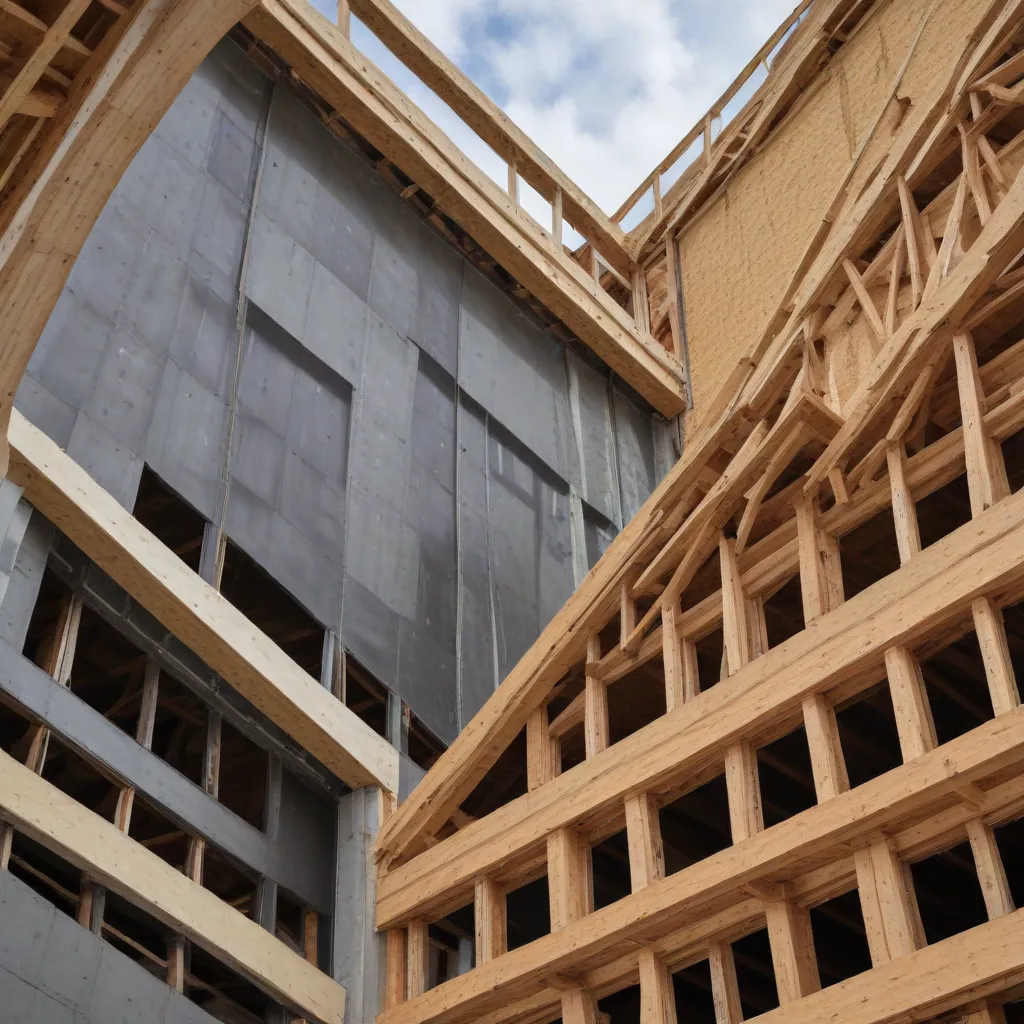
As an experienced roofing specialist, I’ve seen firsthand how the right roofing materials can transform the performance and aesthetics of a building. In this article, I’ll delve into the rising prominence of composite roofing systems and explore how they can deliver a distinct advantage for homeowners and commercial property owners alike.
Composite Materials in Building Design
Composite materials combine two or more constituent materials with different physical or chemical properties to create a superior end product. In the world of roofing, composite roofing has emerged as a versatile and high-performing solution, offering a unique blend of strength, durability, and design flexibility.
Advantages of Composite Materials
Strength-to-Weight Ratio: Composite materials excel in their strength-to-weight ratio, allowing for the creation of lightweight yet robust roofing systems. This advantage translates to easier installation, reduced structural load requirements, and enhanced energy efficiency through lower material usage.
Durability and Corrosion Resistance: Composite roofing systems are inherently resistant to weathering, UV radiation, and corrosion, ensuring a long-lasting, low-maintenance solution for your building. This durability helps to extend the lifespan of the roof, minimizing the need for frequent replacements or repairs.
Design Flexibility: The versatile nature of composite materials enables a wide range of design possibilities. Architects and building owners can incorporate unique shapes, textures, and color options to create visually striking and highly customized roofing systems that complement the overall aesthetic of the structure.
Composite Structures in Buildings
Composite materials are finding increasing application in various building components, from load-bearing walls to flooring solutions. In the realm of roofing, composite roofing has emerged as a standout choice, offering a comprehensive set of performance and design benefits.
Load-Bearing Walls: Composite materials, such as fiberglass-reinforced polymer (FRP) composites, are being utilized in the construction of lightweight, high-strength load-bearing walls. These walls not only provide structural support but also offer enhanced thermal insulation and fire-resistant properties.
Roofing Systems: Composite roofing systems, including polymer-based tiles and metal-polymer hybrid panels, are gaining popularity for their ability to combine the best attributes of traditional roofing materials. These systems offer superior durability, weather resistance, and energy efficiency, while also allowing for diverse aesthetic choices.
Flooring Solutions: Composite materials are also making their mark in flooring applications, with products like fiber-reinforced concrete and engineered wood composites providing enhanced strength, dimensional stability, and sustainable attributes.
Enhancing Building Performance
Beyond their impressive structural and design capabilities, composite materials are also playing a pivotal role in improving the overall performance of buildings, particularly in the realms of energy efficiency and sustainability.
Energy Efficiency
Thermal Insulation: Composite roofing systems often incorporate advanced insulation materials, such as rigid foam insulation or reflective coatings, to enhance the thermal performance of the building envelope. This helps to reduce heating and cooling loads, leading to lower energy consumption and utility costs.
Reduced Heating/Cooling Loads: The lightweight nature of composite materials and their inherent insulating properties can significantly reduce the energy required for heating and cooling the building. This translates to tangible cost savings and a smaller environmental footprint.
Sustainability Considerations
Environmental Impact: Composite materials can be designed with sustainability in mind, utilizing renewable, recycled, or low-impact raw materials. This approach helps to minimize the environmental footprint of the building, aligning with the growing demand for eco-friendly construction solutions.
Lifecycle Analysis: Composite roofing systems often boast an extended lifespan, requiring fewer replacements and generating less waste over the building’s lifetime. This lifecycle analysis is crucial in evaluating the overall sustainability and long-term cost-effectiveness of these roofing solutions.
Structural Integrity and Safety
Ensuring the structural integrity and safety of a building is paramount, and composite materials are well-equipped to address these critical concerns.
Structural Reliability
Load-Bearing Capacity: Composite materials are engineered to provide exceptional load-bearing capabilities, allowing them to support the weight of the roof, as well as withstand the forces of wind, snow, and other environmental stresses.
Seismic Performance: In regions prone to seismic activity, composite roofing systems can offer enhanced resistance to earthquake-induced stresses, helping to maintain the structural stability of the building during such events.
Fire and Weather Resistance
Fire-Retardant Properties: Many composite roofing products are designed with fire-retardant properties, providing a crucial safeguard against the spread of flames and helping to protect the building’s occupants.
Weather-Proofing Capabilities: Composite roofing systems are engineered to withstand the rigors of harsh weather conditions, including heavy rain, hail, and high winds. This weather-proofing capability helps to safeguard the building and its contents from the damaging effects of Mother Nature.
Aesthetic and Design Versatility
The inherent versatility of composite materials extends beyond their functional advantages, allowing building designers and homeowners to explore a wide range of aesthetic possibilities.
Architectural Aesthetics
Customizable Appearances: Composite roofing panels and tiles can be manufactured in a diverse array of colors, textures, and profiles, enabling architects and designers to create visually striking, cohesive building exteriors that align with their artistic vision.
Integrated Design Solutions: Composite materials can be seamlessly integrated into the overall design of a building, allowing for the creation of unified, harmonious structures that blend function and form.
Construction and Installation
Modular Design: Many composite roofing systems are designed with a modular approach, facilitating easier and more efficient installation processes. This modular design can help to reduce construction timelines and labor costs.
Ease of Deployment: The lightweight nature of composite materials, combined with their user-friendly installation methods, can make the deployment of these roofing solutions a more straightforward and streamlined process compared to traditional roofing materials.
As an experienced roofing specialist, I’ve witnessed firsthand the transformative impact that composite materials can have on building performance and aesthetics. By leveraging their unique blend of strength, durability, energy efficiency, and design versatility, Genuine Roof Systems is at the forefront of delivering innovative roofing solutions that elevate the built environment. To learn more about our comprehensive composite roofing offerings, please visit https://www.genuineroofsystems.com.

























